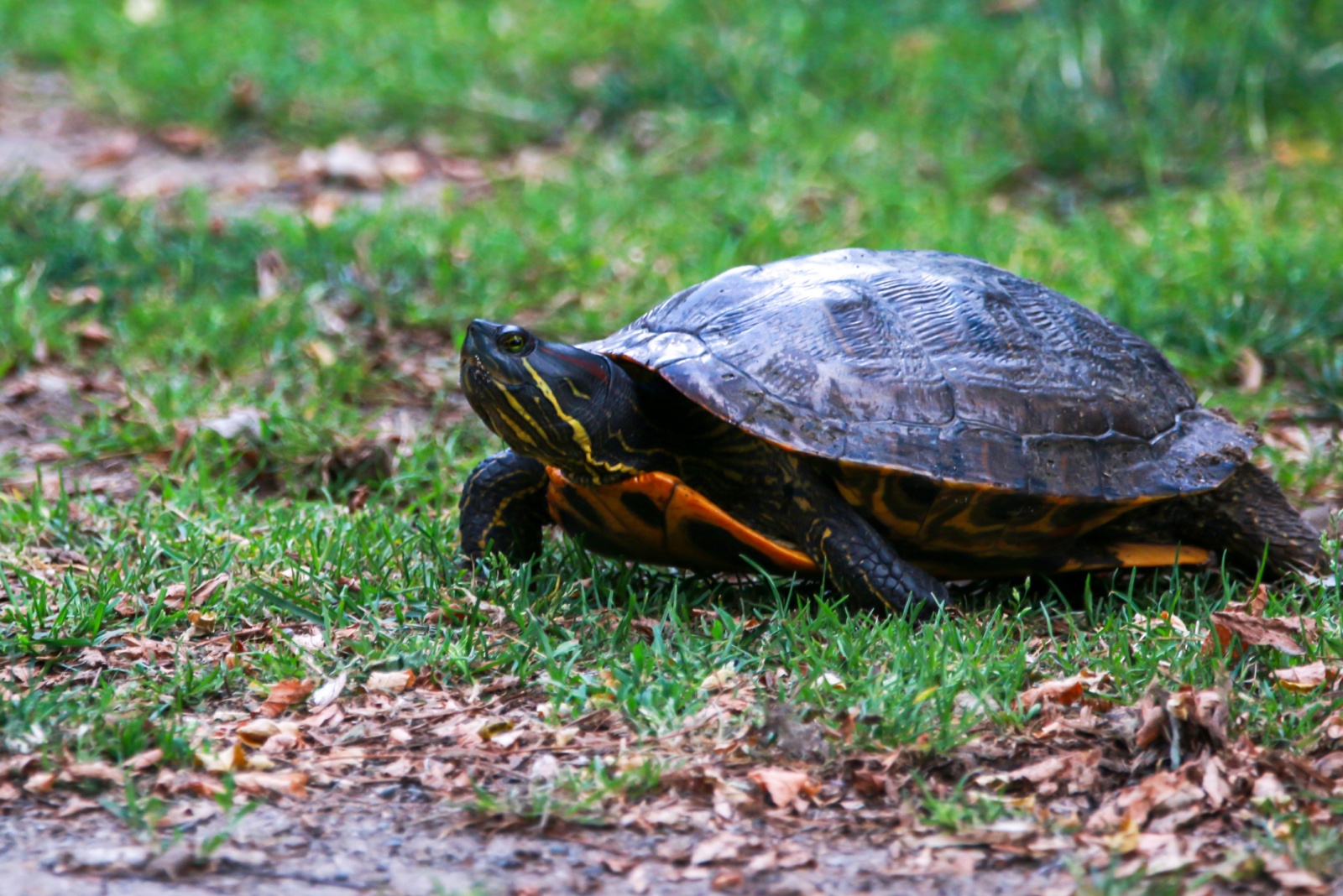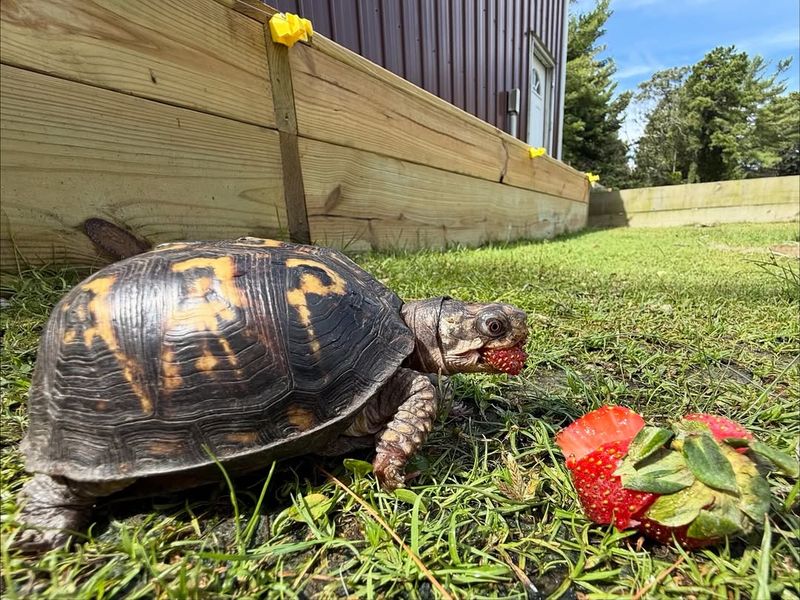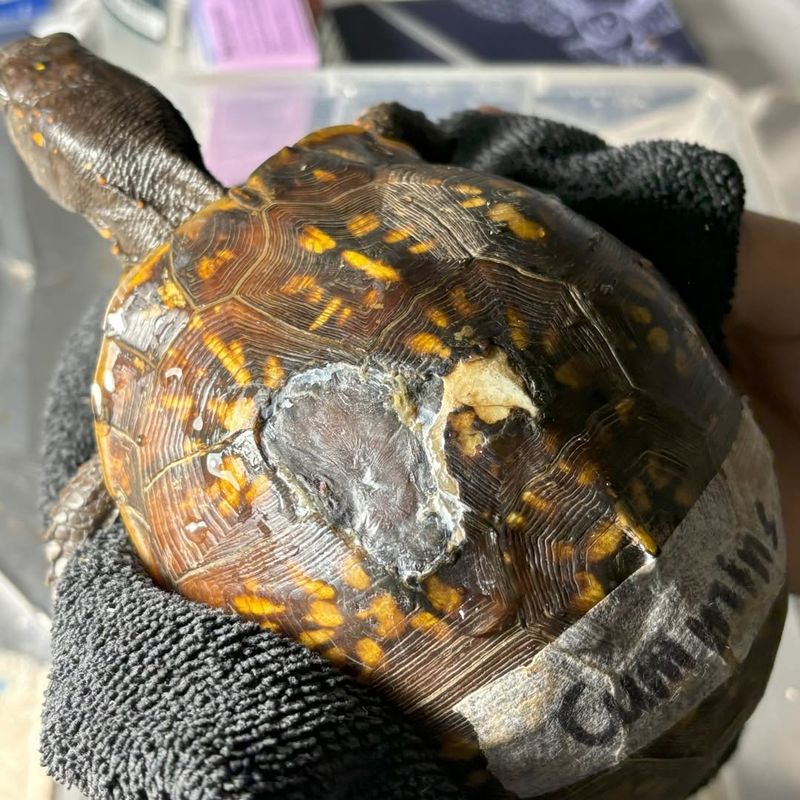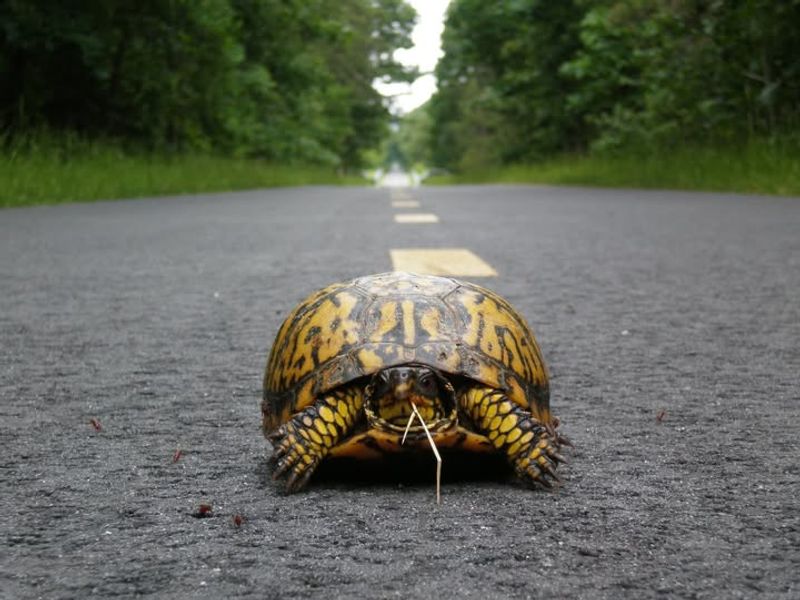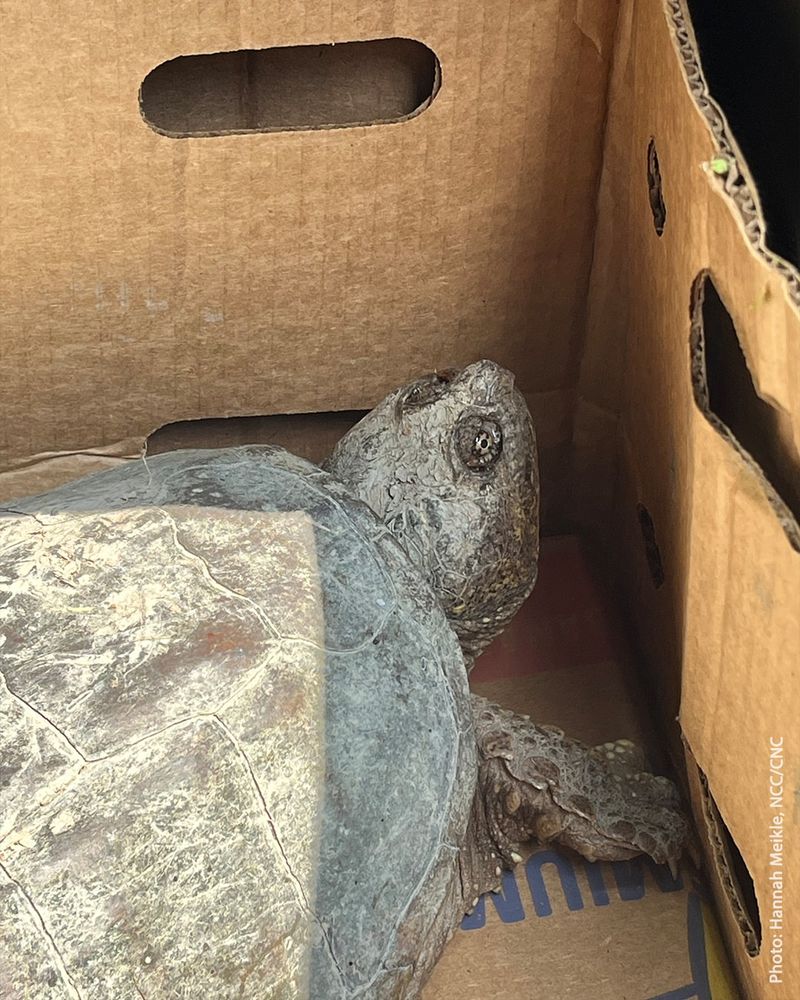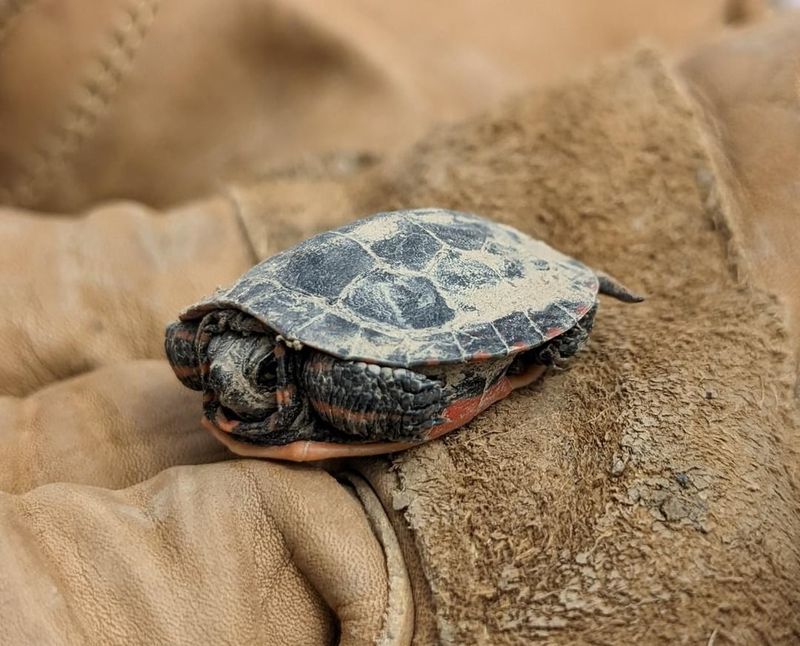If you’ve spent enough time outdoors in New York, chances are you’ve spotted a turtle making its way across a yard or driveway. They might look lost, but most of the time, they know exactly where they’re headed. Trying to lend a hand can sometimes do more harm than good.
A little patience—and the right know-how—goes a long way toward helping these ancient travelers get where they’re going safely.
1. Observe From A Safe Distance First
Before rushing over, take a moment to watch the turtle from where you stand. Staying back lets you figure out what species it might be without stressing the animal out.
Some turtles, like snapping turtles, can be defensive and may bite if they feel threatened. Others are harmless but still prefer to be left alone.
Observation also helps you notice if the turtle appears injured or just passing through your New York yard naturally.
2. Identify The Species Carefully
New York is home to several turtle species, including box turtles, painted turtles, and snapping turtles. Knowing which type you’ve found matters because each has different needs and legal protections.
Box turtles have domed shells and often live on land, while aquatic turtles have flatter shells. Snapping turtles are larger with rough shells and powerful jaws.
Use online guides or apps to help with identification if you’re unsure.
3. Check For Visible Injuries Or Illness
Look closely to see if the turtle has any cracks in its shell, bleeding, or signs of infection. Sometimes turtles get hurt crossing New York roads or escaping predators.
If the shell looks damaged or the turtle seems lethargic and unresponsive, it likely needs medical attention. Healthy turtles are usually alert and will try to move away from you.
Discharge from the eyes or nose can signal respiratory illness that requires professional care.
4. Handle With Proper Technique If Necessary
If you must move the turtle, always grip it firmly by both sides of the shell, near the middle. Never pick up a turtle by its tail, as this can seriously injure its spine.
Keep the turtle low to the ground in case it squirms free and falls. Snapping turtles require extra caution—hold them by the back of the shell, away from their head.
Wash your hands thoroughly afterward since turtles can carry salmonella bacteria.
5. Determine If Relocation Is Needed
Most turtles found in yards are simply traveling between habitats and don’t need your help. Box turtles especially roam widely and know where they’re going.
Only relocate a turtle if it’s in immediate danger, like near a busy New York road or swimming pool. Move it a short distance in the direction it was already heading.
Never transport turtles far from where you found them, as this disrupts their home territory and survival instincts.
6. Contact Wildlife Experts When In Doubt
If the turtle appears injured, sick, or you’re uncertain about what to do, reach out to local wildlife rehabilitators or animal control. New York has several organizations trained to handle native wildlife situations.
They can provide guidance over the phone or arrange for the turtle to receive proper care. Never attempt to keep a wild turtle as a pet, as this is illegal in New York.
Professional advice ensures the best outcome for the animal.
7. Provide Temporary Shelter If Required
If you’re waiting for New York wildlife experts to arrive, keep the turtle in a secure container with air holes. A cardboard box lined with damp towels works well for short-term holding.
Place the container in a cool, quiet spot away from direct sunlight, pets, and children. Don’t offer food or put the turtle in water unless instructed by professionals.
Temporary shelter should only last a few hours until proper help arrives.
8. Learn About Local Turtle Conservation
Finding a turtle in your yard is a great opportunity to learn about local wildlife and conservation efforts. Many New York turtle species face habitat loss and declining populations.
You can help by keeping your yard turtle-friendly with native plants and avoiding pesticides. Creating brush piles and leaving natural areas undisturbed provides safe shelter.
Supporting conservation groups helps protect these amazing reptiles for future generations to enjoy and appreciate.

